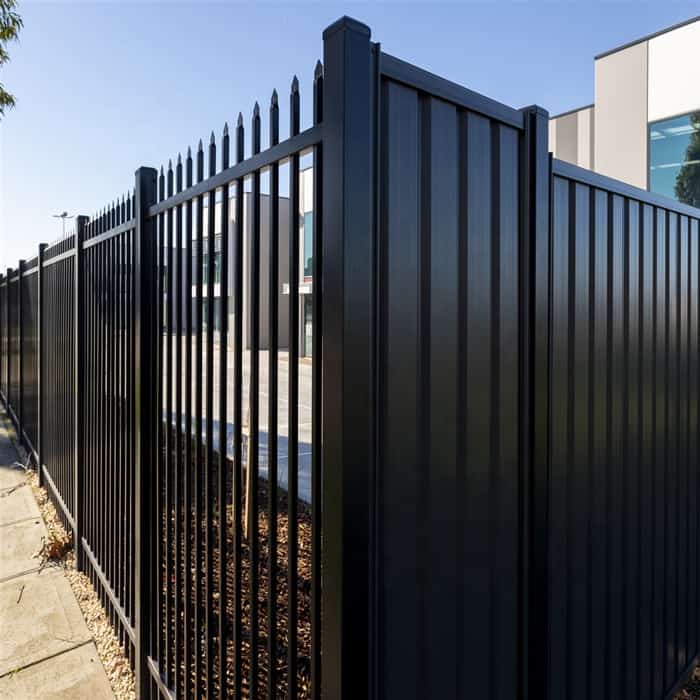[ad_1]
If you’re looking to install a steel fence on your property, congratulations! You’ve made a great choice for both aesthetic and practical reasons. It’s not just security and durability that make steel fences popular; they’re also versatile, can be customized in various ways, and can last for years.
However, before you embark on your DIY steel fence installation, there are some common mistakes to avoid. Making these mistakes can lead to costly and unsafe errors that may require professional intervention.
Below are some common mistakes to avoid when installing a DIY steel fence:
Mistake #1: Not Consulting Local Regulations and Laws
Before you get started, make sure you have obtained any necessary permits and approvals from the local authorities. Otherwise, you might have to dismantle your fence and pay penalties for not following certain rules.
Check your local zoning ordinances, homeowner association rules, and any other local law requirements. Some cities and states require that the fence be a certain height and set back a certain distance from the property line.
Otherwise, you might have to take down your fence and pay fines for not following the rules. Moreover, make sure you’re not installing the fence on the wrong spot, causing any obstruction or problems with the neighbors.
Mistake #2: Using the Wrong Tools
Attempting to install a steel fence without the proper tools is a recipe for disaster. Make sure you have all the necessary equipment before you begin the installation.
Some basic tools you’ll need include a level, measuring tape, hammer drill, circular saw, masking tape, wrenches, screws, and bolts.
Also, make sure you have proper protective gear such as work gloves, safety glasses, and earplugs to prevent injuries from sharp edges or loud noises.
Mistake #3: Poor Planning and Preparation
Measure and mark your fence perimeter before placing the posts’ layout. When installing, make sure you’ve taken into account the terrain and slope of the land where you’re installing the fence. A steel fence must be level, otherwise, it will be unstable and unsafe, and you’ll have to spend more money on repairs and replacements.
Pay particular attention to the placement of gates and their supporting posts. Double-check that you’re leaving enough space for equipment or machinery you might need access to later.
Mistake #4: Improper Post Installation
One of the most crucial steps in steel fence installation is installing the posts. Set the posts with cement or tamped-in dirt. Poorly installed posts can lead to sagging and uneven fences, which will require costly repairs.
To prevent your postholes from becoming misshapen, use a firm base at the bottom, add concrete in layers, then tamp down each layer before continuing until the mix reaches the surface. When pouring concrete, also slope the top of the concrete away from the post to prevent water collection.
Mistake #5: Mismatched Materials
When choosing the steel fence material, make sure it matches the rest of the exterior materials. For example, if your house is made of brick or stone, opt for steel fence panels with a similar texture or color.
Also, if you’ve used a different type of fence on the property’s perimeter or garden, be sure that the steel material you choose doesn’t clash with it.
FAQs
Q1. What are the benefits of steel fences?
A: There are numerous benefits of choosing a steel fence for your property, including:
– Durability and strength
– Wide range of styles and customization options
– Easy to maintain
– Long lifespan
– Added security
– Resistant to the elements
Q2. Should I install the fence myself or hire a professional?
A: DIY steel fence installation can be quite challenging, but it’s certainly possible to do it yourself with sufficient knowledge and preparation.
However, if you don’t have the time or expertise to install the fence on your own, it is advisable to hire a professional to do the job correctly and safely.
Q3. Do I need a permit to install a steel fence?
A: The permit requirements may vary depending on the city or municipality where you live. It’s best to check with your local building department or homeowner association to determine if a permit is needed.
Q4. How long does a steel fence last?
A: The lifespan of a steel fence depends on various factors such as maintenance, climate, and quality of materials used. With proper care, a well-built steel fence can last for decades or even a lifetime.
In conclusion, a DIY steel fence installation can be an exciting and rewarding home improvement project, but it’s vital to avoid common mistakes to prevent costly and unsafe errors. By using the right tools, planning and preparation, and carefully selecting the steel fence material, you can enjoy a beautiful and long-lasting fence for years to come.
[ad_2]


